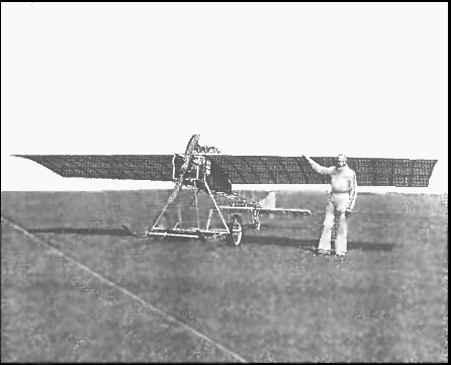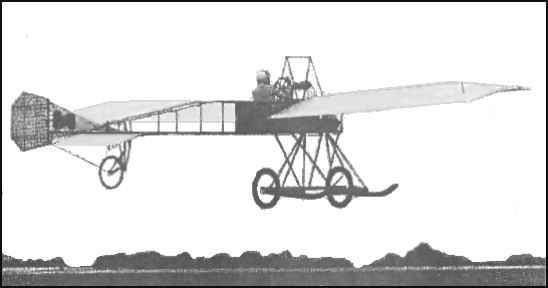
1885- |
|
HORACE AND PERCY WALLIS "John Wallis of Rangles Farm in March, Isle of Ely was born in 1827. In 1850 he married Mary Johnson, a widow with three children. They had two boys, John born in1851 and Samuel Banks, born in 1855. Samuel married Rebecca King from High Bow in London and they set up their home at 12, St. Barnabas Road, in Cambridge. Samuel had a successful Grocers and Tea Importers business in Cambridge. They had six children, Victor, their eldest was born in 1877, Horace was born in 1883, Percy Valentine born in 1885, Garnett born in 1887 and Beatrice born in1886. & Kate.........." This very complete and comprehensive story of the Wallis Brothers may be found on the BIGeniology (British Isles Geniology) website. It offers twelve pages of text and describes in considerable and fascinating detail the careers of both brothers. It may be accessed by clicking on the title. |
 |
|
|
|
extract from the book "The lives of Ken Wallis" by Ian Hancock Courtesy of John Hovell In 1973 Ken and his cousin Geoffrey - son of the co-builder of the original aeroplane - decided that the pioneering work undertaken by their fathers deserved to be recalled in a tangible way and set out to build a replica of their "Wallbro". There was a problem, however; no drawings or details existed and he had only contemporary photographs to work from. Using his considerable engineering skills, plus knowing the height of his father who was pictured alongside the aeroplane in several shots, he calculated the most likely dimensions, overall configuration, and even the steel tube (1" 20 guage) used in its construction. The original tube had been supplied by Accles & Pollock and, on making contact, the company readily agreed to produce a quantity for the replica. A number of other companies were similarly generous in their help and support. Items such as the original lugs made by Chater Lea were no longer available, however, so it was necessary to make about 100 by nickel-bronze brazing pieces of 1" internal diameter steel tube. It is interesting to note that about the time the original "Wallbro" was under construction, Accles & Pollock was busy building The Seddon Biplane at Oldbury in Worcestershire, a novel aircraft of wholly tubular steel arrangement designed by Lt. J. W. Seddon R.N. and A. G. Hackett. Nicknamed "The Mayfly", it was a six-seat, tandem biplane and the world's largest aeroplane at that time. This fantastic structure comprised 2,000 feet of steel tubing arranged as intersecting hoops or geodetics, and was powered by two 65 h.p. N.E.C. engines that drove a pair of Beedle tractor propellers. Unfortunately, it was tested at the Dunstall Park, Wolverhampton, flying ground of the Midland Aero Club late in 1910 but failed completely to emulate its name and was later broken up without having left the ground! Working with his cousin Geoffrey, the task took some five years to complete and numerous problems had to be solved en route. The choice of engine was largely dictated by the spacing fo the frame tubes in the fuselage and as a search for a suitable J.A.P. engine did not produce any leads, Ken turned to a de-rated and converted McCulloch drone engine. It fitted perfectly within the space and was lighter and more powerful than the original so did the job very well. It produced around 60 h.p. consuming 100 octane-plus fuel and only a little of the power was needed, although extra weights had to be added in order to maintain the centre of gravity. During all this building activity there was one particular heart-stopping moment. Ken received an unexpected telephone call from a cousin living near Exeter to say that she was the daughter of his youngest uncle Garnet. She had spotted that he was booked to display "Little Nellie" at The Royal Devon Show and this had caused her to remember a poster advertising the original "Wallbro". She met him at the show - their first meeting - to hand over the document, and returned the following day with some Royal Flying Corps engine manuals that had belonged to his uncle who had served as an engineer in the RFC during World War One. Some days later, Ken opened one of them and out fell a newspaper clipping from the Cambridge Daily News for 12th May 1910. His initial excitement quickly changed to concern when he saw that it was an expertly written article, providing a mass of technical information about the aeroplane and included such gems as the tube gauge. Once digested, however, he was very relieved to find that he had calculated everything correctly - even to guessing a suitable gauge for the wall thickness of the 1 inch steel tube - so work had not been wasted and the reconstruction could continue as planned. Importantly, he also had answers for those parts still to be made. The article by the reporter on his visit to see 'the light and graceful machine built at 12 St. Barnabas Road - the first in Cambridge' went into incredible detail and was an invaluable source for Ken; it even mentioned the width of the wheel hubs and major dimensions to half an inch. Some ot the descriptions of the construction employed on the aircraft now make somewhat quaint reading; 'very elegant........altogether a pretty piece of work........an ingenious little arrangement'. The report went on to note that 'with the exception fo the engine, tractor, magnete and carburetter, the whole of the machine has been built by Mr. Percy Valentine Wallis and Mr. Horace Samuel Wallis of 12 Barnabas-road, Cambridge, two gentlemen well-known in motor cycle racing circles whose successes last year at the Mammoth Show and other motor cycle races in various parts of the country will be remembered.. The engine was tested for a few minutes yesterday and ran splendidly. It proved to be a very easy starter, going off at the first pull of the tractor over compression after the right mixture of gas and air had been found. It very quickly developed a good rate of speed and gave every promise of being capable of sending the machine along at a good 40 miles per hour. The power of the engine, although it was never witnessed at full throttle, was evidenced by the the "Wallbro" tugged and strained at the ropes that held it down to the ground'. |
 |
|
|
|
In August 1978, Ken flew the replica "Wallbro" Monoplane (G-BFIP c/n WA.1) at RAF Swanton Morley, Norfolk, and the first
flight covered about a mile. It achieved an altitude of between 20 to 30 feet and speed of 30 mph. The aircraft later flew on circuits of
the airfield and Ken was pleased to note that it had much performance to spare. The original newspaper article in 1910 had concluded
that 'the "Wallbro" was a fine piece of work......with a number of novel ideas'. A view still held by Ken and many others.
The original aeroplane was clearly ahead of its time in several respects but, sadly, is under-reported in both contemporary and modern journals charting the history of aviation in this country. By building the replica, Ken has therefore ensured that the family's pioneering exploits are now better publicised and also acknowledged - albeit some 70-plus years after the event. To celebrate the flight, the Stakis Hotel (as it was then called - previously The Ambassador Hotel and now the Hilton) at Norwich Airport opened its new restaurant in November 1989 and named it "The Wallbro". The aircraft now resides on permanent public view at the Norfolk & Suffolk Aviation Museum at Flixton, following many years in the hangar at Shipdham Airfield. Ken made a mock-up of the original, and very rare J.A.P. engine, by fitting silencers of much the same shape of the cylinders of the original on to the McCulloch engine. In 1999 I did manage to track down one of the three contemporary J.A.P. engines to a company in Wolverhampton but it was not possible to acquire it. Some other members of Ken's family also had links with aviation. His cousin Basil - six years his senior - flew for Imperial Airways prior to World War II, was an instructor in Rhodesia during the war, and continued flying with Marshall of Cambridge afterwards. His uncle Percy's next son (Bob) flew in the RAFVR but was killed early in World War II at Brize Norton when his Harvard I suffered aileron flutter and both wings came off. The youngest brother (Ken's cousin Geoffrey) - twelve years younger than Ken - joned the Parachute Regiment after World War II and served in Palestine during the time of the Stern Gang bombing of the King David Hotel, etc. He had long held a Pilot's Licence until grounded on medical reasons but his son, Nigel, took over and flew both helicopters and fixed wing aircraft. Ken's son and daughters (David, Vicky and Elizabeth) have not followed their father's footsteps into aviation, unfortunately, so there is no natural heir to continue his work. Only a commercial contract with a suitable company to build the autogyro will ensure the future of his design. |
 |
|
An informal, and authorised, biography covering Ken's design and build of motorcycles, sports cars, powerboats prior to WWII, service in Bomber Command (earning the nickname "Crasher Wallis"), post-war service in armament testing and two years flying with S.A.C.. Details his many inventions and interests, the "Wallbro" Monoplane of 1908-1910 and his construction of the flying replica, on the James Bond film set with "Little Nellie", and over 40 years devoted to developing the modern autogyro. Softcover, 125 pages with over 60 photographs. A revised 4th edition is now available from the museum priced £9.95; £12.50 signed or £25 flown & signed. Postage UK is £2. Send order with payment to:- Net-Sales Norfolk & Suffolk Aviation Museum The Street Flixton Bungay NR35 1NZ |
|
If you have any information on this Early Bird, please contact me. E-mail to Ralph Cooper Back 

|